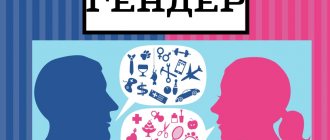Neurolinguistic programming is a popular and hotly debated area of practical psychology. The relevance of this subject is due to a number of reasons.
Firstly, NLP methods are at the intersection of several disciplines: psychology, psychotherapy, programming and linguistics. Secondly, NLP is a new research direction aimed mainly at practical applications in human life. In addition, although neuro-linguistic programming is often criticized by the academic community, this discipline contains a large number of useful and “working” techniques, which will be discussed in the lessons of this section.
In this online training, you will learn for free how to use key NLP techniques: metamodel, framing, reporting, anchoring, working with states and representational systems, and also get acquainted with the best practices, games, books, videos on this topic.
What it is?
NLP (Neurolinguistic programming) is a field of practical psychology that develops applied techniques that model the techniques and practices of famous psychotherapists and communication masters.
In other words, NLP studies the positive experience of specialists in the field of psychotherapy, Gestalt psychology, psychoanalysis, linguistics, hypnosis, with the goal of using this experience in the future. Essentially, NLP is about modeling the techniques of successful people in order to make these techniques available to the public.
It is worth noting that NLP is not a science, and knowledge, due to the nature of its acquisition, cannot be fully scientifically verified. Moreover, the scientific community is skeptical about this area, and it is rare to find NLP courses in universities. But it is important to understand that the creators of NLP did not have the goal of making a full-fledged scientific theory. It was important for them to find publicly available techniques, revealing the complex techniques of famous psychology practitioners.
Who to be in this world is an individual decision
Probably everyone has heard phrases like: “Everything depends on ourselves” or “You are the master of your life.” But, as usually happens, few people think about such words and realize their meaning. And in NLP, one of the key rules is exactly this: “Whether a person will be a winner or a loser depends only on him.”
Everyone is the creator of their own Universe. Ruler of your own Destiny. The one who can “order” himself wealth or poverty, health or illness, success or failure. Sometimes “orders” are made unconsciously.
Some will smile skeptically, others will find hundreds of refutations and arguments against this statement, others will think about it. But we must remember that we are talking about NLP - a technique for manipulating people and one’s own consciousness. Sometimes, some people begin to arrange their lives so recklessly and even aggressively that the phrase “I can!” becomes an hourly accompanying motto. And they achieve truly amazing results.
Because these people believe in their own strengths and in themselves, take responsibility for their Destiny (understanding that it is created by them, and not by karma, superiors, higher powers, government or circumstances), and are also engaged in unlocking their inner potential. They do major work on themselves every day. NLP should not be viewed as a pseudoscientific technique. These are motivations, attitudes, studying one’s consciousness, a constant process of self-improvement. Strength is needed here.
Short story
Collaborative work on the creation of neurolinguistic programming was started in the late 1960s by a group of specialists from the University of California: Richard Bandler, John Grinder, Frank Pucelik, led by their scientific trustee, the famous anthropologist Gregory Bateson. The NLP system was developed to answer the question of why certain psychotherapists interact so effectively with their clients.
Instead of exploring this issue from the point of view of psychotherapeutic theory, Bandler and Grinder turned to analyzing the methods and techniques used by these psychotherapists by observing the progress of their work. The scientists then grouped the methods they studied into different categories and presented them as general models of interpersonal relationships and how people influence each other.
The famous specialists whose professional experience it was decided to transform into models were chosen:
| ✔ | Virginia Satir - family therapy. |
| ✔ | Milton Erickson - Ericksonian hypnosis. |
| ✔ | Fritz Perls - Gestalt therapy. |
The first results of studying the practical skills of these psychotherapists appeared in 1975 and were published in the work “The Structure of Magic. Volume 1" (1975). Then, extended research materials on the model were presented in the books “The Structure of Magic. Volume 2" (1976) and "Changes in the Family" (co-authored with Virginia Satir, 1976).
The result of this work was the so-called Meta Model, which you will learn about in the first lesson of our training. This model served as the foundation for further research in this area and led to the creation of a whole area of practical psychology. Today NLP is an open methodology that has many followers, complementing it with proprietary developments.
You can read more about the history of NLP on Wikipedia.
Ways to avoid manipulation
Specialists in this field take advantage of a person’s temporary weaknesses (chronic fatigue, lack of attention, lack of motivation, subconscious fears, tension, neuropsychic exhaustion, complexes).
Fraudsters can easily find out information about your moral and physical condition from social networks. This is the best way to virtually study a person’s subconscious and begin to manipulate it. To protect yourself, it is not at all necessary to learn a lot of techniques and techniques.
It is enough to comprehend your inner world, strengths and weaknesses, feel your personal “I”, and only then will you program your own thoughts, set the tone for events and create a life scenario.
Application of NLP skill
NLP tries to teach people to observe, understand and influence themselves and others as effectively as experienced psychotherapists and communication masters do. Therefore, NLP has a wide range of applications, which can include such areas as:
- psychotherapy,
- time management,
- oratory,
- education,
- management and management,
- sales,
- acting,
- jurisprudence,
- writing and journalism.
NLP allows you to develop the communication skills that every person needs. In addition, NLP helps personal development: the ability to correctly understand your emotional states, perceive the world around you in a diversified way, and achieve flexibility in behavior. Advanced NLP techniques allow you to treat phobias and psychological trauma, maintain good mental shape and maintain a high level of performance.
If you want to find out to what extent, even at an intuitive level, you now know NLP techniques and can apply them to develop your career, we invite you to solve the case:
Statistics Full screen
How to learn it
In accordance with the main principles of NLP, almost any person is able to master all the techniques of this theory. As a rule, popular training centers distinguish three main stages of training in neurolinguistic programming:
| 1 | NLP practitioner course: learning NLP skills and the ability to apply them in practice. |
| 2 | NLP Master course: in-depth study of NLP techniques. |
| 3 | NLP trainer course: ability to work with an audience and knowledge of the features of teaching NLP. |
Often, trainings can last several weeks and can be quite expensive, but face-to-face courses are not the only way to learn the basics of neurolinguistic programming. After researching the experience of teaching this skill, we came to the conclusion that all NLP techniques (or at least most of them) can be learned independently. We have prepared a number of lessons that will help you develop useful competencies for full mastery of the techniques of this psychological direction.
Want to test your knowledge?
If you want to test your theoretical knowledge on the topic of the course and understand how suitable it is for you, you can take our test. For each question, only 1 option can be correct. After you select one of the options, the system automatically moves on to the next question.
Statistics Full screen
Swing
To replace a person’s destructive type of reaction with something else, you will need the “swing” technique. Changing the method of responding is not the only result that a person can get thanks to this technique, since it also effectively helps each of us to develop our own positive image. The “waving” technique can be used almost everywhere, because it helps eliminate bad habits and even corrects behavioral problems.
“Swing”: at the very beginning we need to identify a situation to which we do not react as we would like; it is necessary to identify factors that contribute to the habitual reaction; Next, you should create the ideal state that you would like to achieve in this situation; the next stage is the “swing”, which quickly changes from one state to another. The last stage is checking the already changed state.
NLP lessons
The goal of our online course is to teach you how to use the fundamentals of Neuro Linguistic Programming taught in basic NLP classes. In our training you will not find a complete course in hypnosis and NLP aerobatics, but we have tried to present all the key techniques and concepts that underlie hypnosis and advanced concepts.
If you just want to get acquainted with the basics of NLP, then you can take the lessons presented below. Lessons 1 and 2 cover language patterns, Lessons 3 and 4 cover nonverbal communication techniques, and Lesson 5 covers effective self-development techniques.
Lesson 1. Language model or NLP metamodel
One of the earliest and most popular concepts in NLP is the language model or, as it is called, the metamodel. This model helps to better understand the meaning of human speech. The thing is that when expressing our thoughts, we cannot absolutely accurately convey to our interlocutor what we are thinking about. We miss something, believing that it is already clear, and we unintentionally distort something. But can our interlocutor, colleague, or subordinate understand us correctly?
Not always, unless you are a good psychotherapist or psychoanalyst. To properly understand a person, professional psychotherapists ask him special questions that help them enter the deep structure of human thoughts. The metamodel of neurolinguistic programming described in this lesson will help you better understand a person, and in some cases even change his own perception through the use of special psychotherapy techniques.
Lesson 2. Framing and positions of perception
In this lesson you will learn two useful NLP techniques. The first of them, framing, will teach you to frame your thoughts in various frames (frame, translated from English as frame), which will undoubtedly help you develop communication skills. The second technique will allow you to work with five positions of perception and representation of reality. Both of these models can actively influence your speech, making it more flexible.
Lesson 3. Representational systems
In the previous two lessons you were introduced to the key linguistic techniques of NLP. However, no less important in neurolinguistic programming are models for understanding neuroprocesses and their impact on the human psyche. In this lesson we will talk about the influence of the senses on the interpretation of a person’s experience.
Lesson 4. Report, calibration, adjustment
The physiological processes accompanying the moment of communication are no less important than speech itself. It is known that nonverbal techniques are an essential component of any act of communication. The techniques in this lesson will allow you to influence your physiological characteristics during communication, which will help you be a “comfortable” interlocutor when communicating with different people.
Lesson 5. Performance, working with states, anchoring
This lesson will examine NLP techniques aimed at increasing a person’s effectiveness, as well as its impact on one’s own nervous processes. Not many people know that today’s popular methods of improving performance, for example, SMART, appeared within the framework of NLP. This lesson will introduce basic models to help people manage their motivation and emotional states.
Examples
The peculiarity of using neurolinguistic programming is its secrecy. The instructions are presented in a veiled and indirect manner, for example, the command “could you help me?” doesn't sound like an order
Deciphering such a message occurs on a subconscious level, and the person does not focus on it. Or when discussing a question, the manipulator, instead of shaking hands, takes it under the elbow
NLP methods are well used in the sales field. When trading expensive goods, not every buyer will agree to purchase something right away. Therefore, a special belief system is used. For example, the seller puts pressure on pain points:
- You deserve it;
- You need to pamper yourself;
- I'll make a special offer, etc.
There are different techniques in neuro-linguistic programming of people. For example, a client may hear three questions that require an affirmative answer, and he will not understand how the fourth question will also turn out to be positive.
The seller does not allow the person to simply stand in the store for a while. It gives the illusion of choice: will you buy a set or a part? Although in reality only a set may be sold, the person is given the imaginary opportunity to determine for himself what to take.
Positive statements incline a person to make a choice, an intelligent person does just that
There is a lesson to be learned from every situation. If someone speaks negatively about a person, then he should analyze the information: is the assessment really objective, are there specific shortcomings? You can make a list of negative character traits and compare it with reality.
Managing your own emotions is useful in different situations. For example, if a person drops a smartphone into water. You need to imagine the situation in great detail in advance, and then mentally transport yourself far from the scene of the incident. This technique allows you to reveal hidden emotions and stop taking the problem seriously.
NLP techniques can only be deciphered on a subconscious level. They are actively used in various fields: marketing, psychology, sales, training, etc.
How to take classes
To successfully master basic NLP techniques you will need:
- Study the theory, and not just strive to memorize the sequence of actions.
- Train yourself by completing the course exercises.
- Try to carefully use the learned techniques in practice.
It is the constant application of the acquired knowledge in life that will allow you to truly master neurolinguistic programming. It is also important to note that applying NLP knowledge will increase your attentiveness during communication and teach you to independently model (create) successful methods and techniques.
In addition, to study NLP, it is recommended to master several general rules, the so-called presuppositions of neurolinguistic programming.
Internal resources are limitless
This is the next NLP rule. Every person has fantastic resources, but practically does not use them fully. Why? Because of natural laziness.
Why read and educate yourself when you can take out your smartphone and quickly Google what interests you? Why try to master the skill of managing your body, pressure and temperature when there is aspirin, antipyretics?
NLP is a field of knowledge and methods in which great attention is paid to hidden potential. One of the main tasks is to discover in the depths of the soul the necessary resources to achieve certain goals, find talents, quickly master skills and knowledge
In general, everything that can make life easier.
And here is the NLP rule for every day: you need to train yourself to pay special attention to people whose abilities you admire. This is the easiest way to identify and develop your hidden talents
After all, a person notices in others those qualities that are characteristic of himself! Only he sometimes doesn’t realize it. NLP supporters are sure: if a person noted someone’s talent or ability and was happy for its owner, it means that he has the same inclinations. He just didn't allow himself to show them earlier.
But this also applies to disadvantages. A person accuses someone of envy, meanness, anger, meanness? But aren’t they characteristic of him too? Probably yes. Particularly annoying are those qualities that people subconsciously do not accept in themselves.
Presuppositions - basic principles of NLP
While modeling the techniques of famous psychotherapists, NLP developers identified several general simple rules that these specialists used in their works. Scientists combined the studied material into a common system of presuppositions.
Presuppositions in neurolinguistic programming (NLP) are axiomatic beliefs used as a tool to facilitate the achievement of the most effective results from the techniques used. The essence of using presuppositions is that for the most effective training of NLP, they must be accepted a priori (as an axiom). The main presuppositions of NLP are:
| 1 | The map is not the territory. Just as the most detailed map will never be an accurate representation of the territory, so the words we use do not contain an absolutely accurate representation of our experience, of which they are a representation. In NLP there are two levels of phenomena: external reality and internal subjective reality. In other words, NLP does not work with reality, or “territory,” but with subjective perceptions and beliefs about reality (“maps”). |
| 2 | The person with the most flexibility has the most influence in the system. In any system, the person with the most flexible behavior will be able to consider more choices and will therefore have more influence in the system. Accordingly, the more options you have in your communication toolbox, the less likely you are to find yourself stuck. |
| 3 | There are no defeats, only feedback. This presupposition is borrowed from William Ross Ashby's principle of the importance of feedback loops in information theory. In neuro-linguistic programming, nothing is considered in terms of “success” and “failure.” Unsuccessful results following an action are not a cause for disappointment and despair, but valuable feedback information that determines the effectiveness of what you do. |
| 4 | The mind and body inevitably influence each other. This is because the human body contains approximately 100 billion nerve cells. Most of these cells are found in the brain. Each of the hundred billion neurons is connected to at least a thousand others. And, therefore, everything in us is interconnected, especially the mind and body. |
| 5 | Personality and behavior are different phenomena. We are more than our behavior. We may do different things in different situations, and often do so unintentionally. Thus, people's behavior does not define people themselves. |
| 6 | The basis of any human behavior is a positive intention. This presupposition is borrowed from the belief system of Virginia Satir. Its essence lies in the fact that even a person's seemingly negative behavior is considered in NLP as an attempt to fulfill a positive intention (which he may not be aware of). |
These are not all the basic principles that are highlighted in textbooks on NL programming. If we put together all the presuppositions of famous NLP authors, we can make the following list:
Background assumptions regarding mental processing:
- “Map” is not “territory”.
- People's reactions correspond to their cards.
- The meaning depends on the context.
- The mind and body inevitably influence each other.
- Individual skills result from the refinement and consistency of the use of representational systems.
- We respect other people's models of the world.
- Personality and behavior are different phenomena. We are more than our behavior.
- Each behavior is practical and useful in a specific context.
- We evaluate behavior and change in terms of context and ecology.
Communicative presuppositions:
- We can't help but communicate.
- The way we communicate affects our perception.
- The meaning of communication lies in the reaction it evokes.
- The person who sets the frame of communication controls it.
- There are no defeats, only feedback.
- The person with the most flexibility has the most influence in the system.
- Resistance indicates a lack of rapport
.
Presuppositions concerning learning, choice and change :
- People have the internal resources necessary to achieve their goals.
- People are capable of learning anything in one try.
- Any communication should increase the number of available alternatives.
- When performing any action, people choose the best option available to them at the moment.
- We can control our brains and control the results.
You can read more about presuppositions in NLP in the textbook “NLP Practitioner”, as well as on Wikipedia.
Additional materials
It is impossible to describe all possible models and techniques of neurolinguistic programming within one online course. This is also due to the fact that this research area continues to develop, modeling new psychological and linguistic techniques. Many of these techniques are quite specific, so they will not be of interest to all 4brain readers. To make it easier for you to find the information you need, we decided to provide links to additional materials (books, videos, articles) that are not included in our course.
Books
You can find many NLP textbooks in stores, but often these books contain little useful information. To help you better navigate the literature on neurolinguistic programming, we have selected a list of the most popular and proven books. It included:
- "Tricks of the tongue." Robert Dilts.
- "From frogs to princes." John Grinder.
- “NLP Practitioner: Complete Certification Course. Textbook of NLP magic. Bodenhamer B., Hall M.
- "The art of persuasion." Richard Bandler.
- "77 Best NLP Techniques." Michael Hall.
- And some others.
Video
Due to the fact that many NLP techniques represent specific speech techniques and behaviors, it is difficult to learn all of this just by reading a text description. An important component of training is visual examples of people who have already mastered the required technique, as well as master classes and lectures by leading experts. We also tried to include videos with such examples and presentations in our training and additional materials.
Other materials
In addition, pay attention to our other online trainings that complement NLP knowledge:
- Training in public speaking and writing will help you better master your oral and written language skills.
- A course of lessons on human psychology will introduce you to the basic concepts of psychology: personality, motivation, society, development.
- In leadership classes, you will learn about the qualities of real leaders and management styles.
And finally, some more useful information.
Where to begin?
But the main format of training in NLP is training, and there are many centers that teach NLP. So you can go to a training to try it out, especially since there are often demo and free classes. The basic course is called NLP Practitioner, but there are also trainings that teach specific skills. For example, we have - effective communication skills; "Successful Thinking" - methods of change; "Everyday Hypnosis" - the use of trance in everyday life (we constantly hypnotize each other, let's do it effectively and environmentally); "Changing Beliefs" - we deal with our rules of life; And many others.











